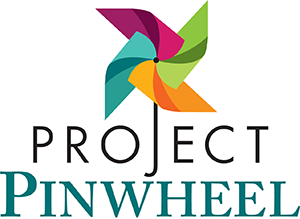Who Are They?
Many people believe they could easily identify a sexual abuser. Societal myths present abusers as dirty, old, single homosexual men. The only grain of truth in that description is that most (95% )of reported perpetrators are men. However, the “typical” offender is married, heterosexual and employed. Most people who sexually abuse children look and appear to act just like everyone else. It’s hard to face the fact that someone we know – and even like or love – might sexually abuse a child. But the truth is that in over 90% of cases, the child knows and trusts the person who commits the abuse.
This means that most abusers are either immediate family members (i.e. parents and siblings) or other close relatives (e.g. uncles, aunts, grandparents, cousins). Others in the child’s circle of trust may also be abusers. These include those with easy access to children because of their work in schools, child care centers, youth groups, sports teams, religious organizations and in other settings where children live and play.
Did you know?
- Step-fathers are 7X more likely to abuse a child than a biological father?
- A domestic violence batterer is 6X more likely to sexually abuse a child than a non-batterer?
How Do They Do It?
Child sexual abuse often starts with a gradual process called grooming. During this period the abuser builds rapport and gains trust with not only the child, but their caregiver. Examples of grooming behavior include:
- Special attention, outings, and gifts
- Introducing little secrets ie: “don’t tell your parents I let you drink soda before dinner” to make way for the big one
- Seeks out opportunities to spend time alone with the child
- Filling the child’s unmet needs or needs/roles for the family
- Treating the child as if he or she is older
- Gradually crossing physical boundaries, and becoming increasingly intimate/sexual
- Use of secrecy, blame, and threats to maintain control
Does that mean you have to reject every genuine act of good directed towards you or your child? No, but the most effective tool parents have is their natural parental instinct to protect their children. Always be honest, vigilant and aware and most of all, don’t be afraid to ask questions.
What does it look like?
It may look so normal at first it doesn’t even enter your radar screen. Maybe you observe someone playing with a child and feel a vague sense of unease. Maybe you thought, “I’m just over-reacting,” or, “He/She doesn’t really mean that.” If you are uncomfortable, but don’t see specific signs, trust your instincts and ask more questions. Below is a list of behaviors that might be cause for concern.
Do you know an adult, adolescent or older child who:
- Makes others uncomfortable by ignoring social, emotional or physical boundaries or limits?
- Insists on hugging, touching, kissing, tickling, wrestling with or holding a child even when the child does not want this physical contact or attention?
- Overrules a child’s “no” and requests to stop?
- Seems “too good to be true,” for example, baby sits different children for free; takes children on special outings alone; buys children gifts or gives them money for no apparent reason?
- Encourages silence and secrets with a child?
- Allows children or teens to consistently get away with inappropriate behaviors?
- Spends most spare time on activities involving children or teens, rather than other adults?
Peer on Peer Abuse
Sadly, in at least one out of three cases, according to the U.S. Department of Justice, youth sexually abuse their peers and/or younger children. Many of these children have been victims of child abuse or neglect themselves or have witnessed violence in the home. Youth with problematic sexual behaviors are in need of therapeutic help to deal with their own current or past trauma. Boulder County has a program that specializes in treatment for youth sex offenders called Project REACH. This treatment program creates long-term positive results and allows most children who have sexually offended to become healthy and productive adults.

